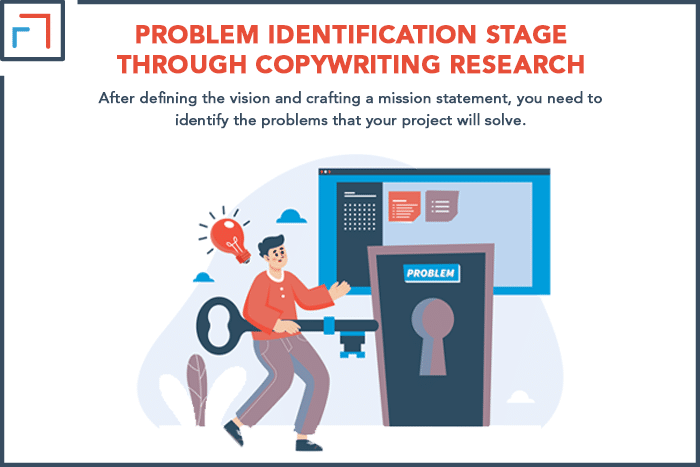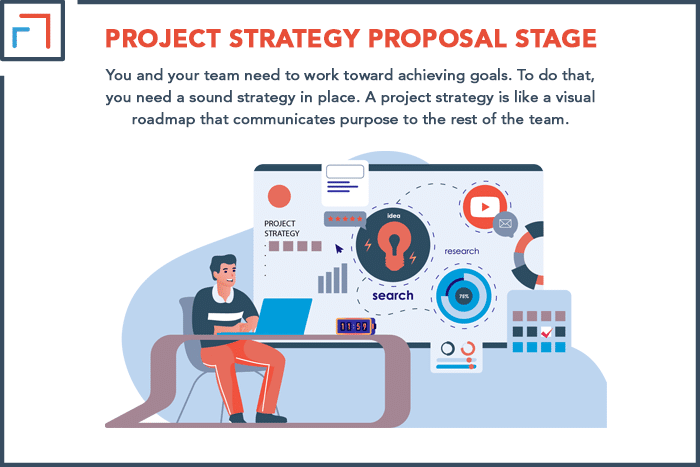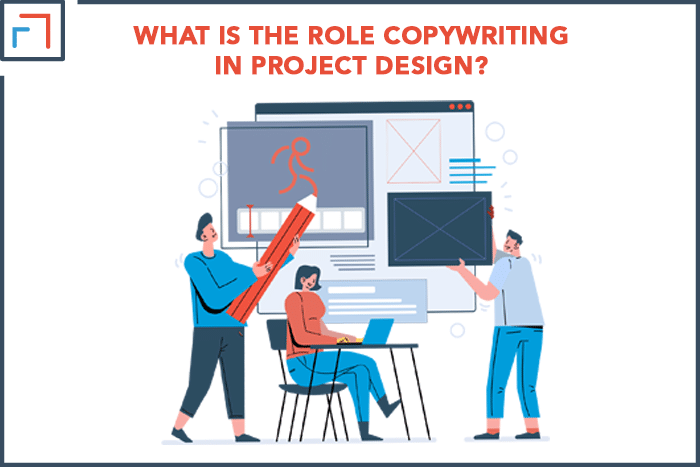Project design is a crucial phase that often determines the success of a project. It helps project managers and team members make a plan and stay on track. Copywriting helps improve the quality of a project design.
Copywriting is important in project design because it is used to craft a clear vision statement that convinces sponsors to invest in a project. With proper research, it also helps identify the problem that the project will solve. Copywriting is the driving force behind the project design.
In this article, we’ll discuss the various stages of project design and how copywriting is important to each of them. Although these two practices may seem separate, they are actually deeply connected.
The Relationship Between Project Design And Copywriting
Project design happens in the early stages of project development. It’s where the team organizes the ideas, resources, and procedures that are necessary to ensure project success.
An effective project design helps team members avoid mistakes and keeps the project on track. The design phase includes decisions regarding the administration and governance of the project.
The fundamental goal of this phase is to come up with design ideas to help everyone achieve the project goals.
Shareholders then use the design ideas to pick the method that best suits their ideal execution of the project. Copywriting helps the design team to brainstorm and come up with great ideas.
A copywriter then packages all the information and ideas together in an easy-to-understand manner. Once the design ideas are ready, they are presented to the stakeholders.
Clear communication is essential because it determines if the project will be accepted and move forward.
The Importance of Copywriting in the Development of a Project Design
Designing a product that can deliver on its promise is an uphill task. For any project to be successful, all the team members must collaborate from the beginning to the end.
Copywriters are usually among the members of the project design team, and they work with other employees to oversee the development of a project.
To get a clear picture of how copywriting aids project design, we will go through the different steps of project design and how copywriting impacts it.
1. Vision Definition Stage: Crafting Concise Vision Statements Through Copywriting
Every project should have a vision to guide it. Copywriters are responsible for creating a vision statement, which is meant to inspire and motivate everyone involved.
It also encapsulates the project’s potential and shows how it can make consumers’ lives easier.
A vision statement is an opportunity to convince the shareholders that a project is worth investing in. An effective vision statement should be short, clear, and concise. That is where copywriting comes in.
Copywriting aims to persuade and convince readers to take action. It does this in a straightforward manner that isn’t overly complicated.
Copywriting helps keep your project’s vision statement clear and to the point. For example, when Microsoft first started, its vision was; “A computer on every desk in every home.”
The above statement is not only concise, but it clearly describes Microsoft’s vision for the future.
2. Problem Identification Stage Through Copywriting Research
After defining the vision and crafting a mission statement, you need to identify the problems that your project will solve. The problem will reinforce your vision and make it more powerful.
To identify a problem that needs solving, your team will need to conduct a need assessment.
The assessment will also help you recognize the challenges that a brand is facing. Identifying the business challenges and the problem to be solved helps align the problem with the brand and its strategy.
This puts the business in a position to generate a solution that best tackles the issue. Copywriters help to identify the problem by performing research and gathering insightful data.
A copywriter knows how to collect data, analyze it, and identify possible issues. They will then document these findings for future use.

3. Resource Planning Stage
The next stage is where the team figures out the necessary resources for the project.
These resources can include human resources, time, money, facilities, equipment, and any other resources that will help the project run smoothly.
Resource planning involves listing all the resources required for the project and determining how they will be managed throughout the project.
Additionally, the roles and responsibilities of each group are clarified to create a division of labor. Proper resource planning maps out the exact quantities of resources needed.
This makes the budgeting and scheduling of tasks more manageable. By harmonizing your resources, schedules, and budget, the project will flow more smoothly.
In addition to allocating resources as needed, this planning stage aims to utilize resources efficiently to boost project productivity.
Similarly, workloads must be balanced so the teams can stay on top of their duties throughout the project.
4. Goal Definition Stage: Creating Persuasive Project Goal Statements By Copywriting
Project managers should always set objectives for their teams and monitor them as they accomplish the goals. Without goals, projects would lack direction, and the teams would be less efficient.
Setting measurable and observable goals ensures that goals work in tandem with your vision to solve the problems you identified earlier. The goals should also follow the SMART model.
To keep everything in one place, developing a project goal statement is critical. A project goal statement paints a clear picture of what you aim to accomplish.
It is an official document you need to prepare at the initial phase of project development, and it should clearly state the project context, purpose, and primary focus.
The project goal statement is an important marketing step that can help your organization build relationships with potential sponsors and ask for funding.
As such, the statement should be unambiguous while pointing out what is in it for the sponsor if the project succeeds.
If you need funding for your project, copywriting can help you craft a persuasive project goal statement that will convince sponsors to invest in your project.
Copywriters will keep it concise while also cleverly highlighting the benefits the sponsor will gain if they sponsor your project.
5. Project Strategy Proposal Stage
Once you have clearly defined goals, you and your team need to work toward achieving them. To do that, you need a sound strategy in place.
A project strategy is like a visual roadmap that communicates purpose to the rest of the team. To come up with a great strategy, you need to consider several variables.
Some variables to keep in mind include budget, schedule, project constraints, and resources. The strategy should work in harmony with these variables to ensure project success.
If you look back at similar projects from the past, you can borrow a few ideas for your strategy. Study how they functioned, what worked, and what didn’t.
Borrow anything practical and avoid making similar mistakes from the past. You can also get great ideas by following some best project management practices.
Another creative way to come up with strategies is by using visual aids. Visual aids help depict variables and goals in an easily consumable manner. They also highlight the important details.
These details may include deliverables, deadlines, objectives, and more. There are several visual aids you could utilize. Some of the best options include:
- Flowcharts: These visually represent the steps that will be followed to carry out a process. They are perfect if your approach consists of a series of steps.
- Mind maps: These are hierarchical diagrams you can use to visualize the flow of a project or task. You can use it to show your team how various deliverables are linked to a common idea, such as goals.
- Gantt charts: These horizontal bar charts will help the team to visualize the project timelines. The bars represent the project steps, while the bar length represents the project duration.

6. Contingency Plan Building Stage
As much as we love to stay in control, sometimes things do not go as planned. What will happen to your projects if something goes wrong?
The occurrence of unseen events calls for a backup plan so you can keep the project progressing as planned.
In building your contingency plan, keep an eye out for possible risks that may affect your project.
These may include a lack of skills in some teams, staff turnover, unavoidable circumstances leading to absences, etc.
It is worth noting that aside from negative risks, some positive factors may lead to developing a contingency plan.
For instance, if an upcoming event presents an opportunity during the project, it can be included in the contingency plan.
While a contingency plan may seem like a low priority, it can help counter unforeseen circumstances that may wreak havoc on the project’s progress.
For instance, high turnover may lead to missed deadlines, which then ruins the entire schedule. Or, if costs rise, the allocated funds may be insufficient.
7. Budgeting Stage
A project budget shows the total projected cost of a project over a specific period of time. With a budget, you can estimate how much money each phase of the project needs.
As such, you need to handle the budget carefully to ensure it gets enough funding. The budget should include all project design aspects that need funds.
These may include labor costs, operational costs, production materials, and supply costs (among others).
These costs will remain under review during the course of the project and may be adjusted to cater to any financial changes.
Other resources to leverage include data from previous projects and the research the copywriters performed at the beginning.
You can also tap into the knowledge and experience of experts once your budget is written. Have them go through it to ensure there are no errors or typos.
Ensure your budget is as detailed and transparent as possible to avoid overspending and discrepancies during project implementation. The budget will help you determine if the project is practical.
A project is only feasible if the budget does not exceed the sponsor’s funds.
8. Proposal Writing Stage: Crafting a Convincing Proposal Through Copy
After completing the above project design stages, it is time to compile everything together and write the project proposal.
The proposal should explain why the project is necessary and how it will benefit your customers. In addition, it should show how the project will tackle a specific problem.
When it comes to proposal writing, the planning and execution differ depending on the project type. However, some elements of proposal writing are the same regardless of the project type.
The first element is understanding who you are addressing, thus ensuring your project has a direction. This means you need to understand your audience.
Copywriters excel in this area and can craft targeted copy. Copywriters will help you conduct audience analysis to get a deeper understanding of who your target audience is.
With these insights, you’ll be able to craft a proposal that your audience can relate to. Another important proposal writing element is research.
Research may include market research and the knowledge of industry experts. In addition, copywriters have skills that may help them gather information by interviewing experts.
Copywriting can clearly define the project’s purpose in the proposal. The primary aim of a project is to help solve a problem, and copywriting helps to clearly communicate the benefits of the proposed plan.
What Is The Role Of Copywriting In Project Design?
Project design is a phase that’s necessary for the execution of a successful project.
Copywriting plays an important role in the process when it comes to collecting information, preparing budgets, and coordinating teams.
Good copywriters communicate ideas among team members and ensure that the work flows easily. Generally, copywriting helps you tell your brand or product story.
It combines the vision, mission, and goals and crafts them into a beautiful story that resonates with the target audience and relevant shareholders.
The vision statement describes what your projects hope to accomplish in the future. Using your vision to tell a story is an approach that many people are able to connect with.
This is because everyone hopes to transform the world for the better. Copywriting can help convince the audience that your project will bring them closer to their dreams.
The core purpose of a project is to solve a specific problem that your target audience is facing. As mentioned earlier, problem identification is a critical stage in project design.
Copywriting can help you reach your target audience and pitch your product/service as the perfect solution. It is easier to get people’s attention when you tell them something that touches their hearts.
Compelling copy often includes pain points and urgent language. Copywriting weaves these pain points into the project design to help everyone connect with the audience on a deeper level.

Closing Thoughts
Project design is a core phase of project development. It plays a vital role in the success of a project. Subsequently, the process should be carefully planned to ensure all details are accounted for.
Copywriting helps businesses communicate the vision and goal statements of their project. In addition, it helps tell a story within the project design.
Once you understand the relationship between project design and copywriting, you’ll be able to craft a powerful project proposal.
